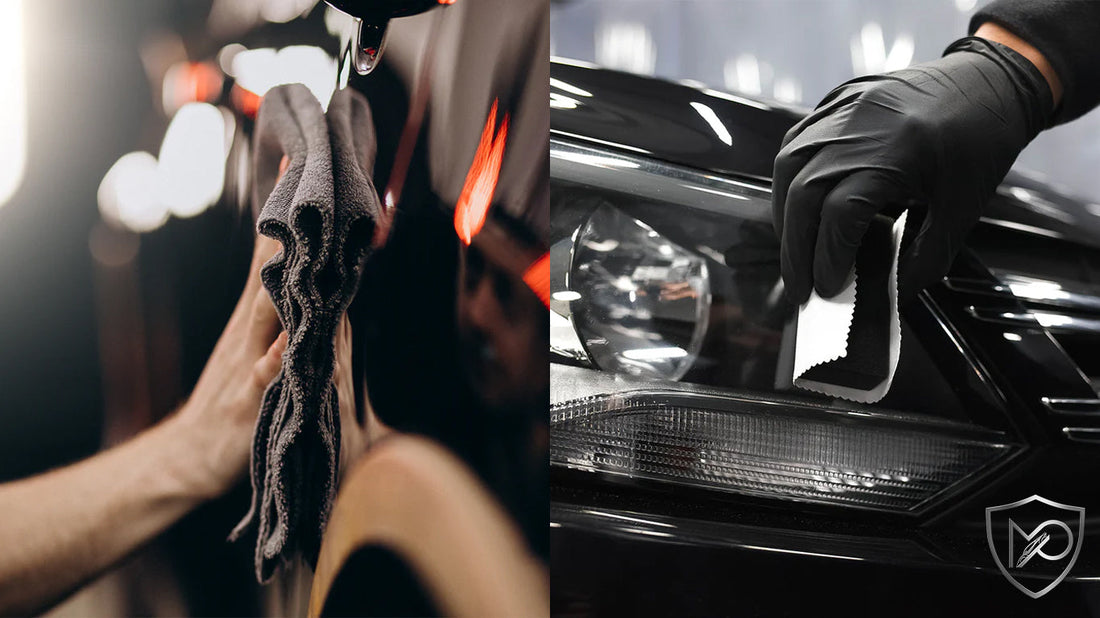In the world of automotive care, maintaining the aesthetic appeal and longevity of your vehicle is a top priority. One of the most effective ways to achieve this is through ceramic coatings. Among the various options available, 9H and 10H ceramic coatings stand out as the gold standard. But what exactly do these terms mean, and how do they benefit your car? This deep dive will explore the intricacies of 9H and 10H ceramic coatings, helping you make an informed decision for your vehicle's protection and shine.
What Are Ceramic Coatings?
Ceramic coatings are liquid polymers applied to the exterior surfaces of a vehicle. They bond chemically with the factory paint, creating a protective layer that enhances durability and shine. Unlike traditional waxes and sealants, ceramic coatings offer long-lasting protection, often lasting several years with proper maintenance.
The Science Behind 9H and 10H
The terms 9H and 10H refer to the hardness of the diy ceramic coating on the pencil hardness scale, which ranges from 1H (softest) to 10H (hardest). This scale is commonly used to measure the hardness of coatings and their resistance to scratches and abrasions. A higher H rating indicates greater hardness and better protection.
- 9H Ceramic Coating: A 9H rating means the coating can resist scratches up to the level of a 9H pencil, making it extremely tough and durable. This level of hardness provides a robust shield against minor scratches, bird droppings, road salt, and other environmental contaminants.
- 10H Ceramic Coating: As an upgrade to the 9H, the 10H ceramic coating offers even greater hardness and protection. It can withstand scratches from objects that would otherwise leave marks on a 9H-coated surface. The 10H coating is often considered the pinnacle of ceramic coating technology, offering unmatched durability and resilience.
Benefits of 9H and 10H Ceramic Coatings
- Superior Scratch Resistance: Both 9H and 10H ceramic coatings provide excellent scratch resistance, protecting your vehicle from everyday wear and tear. The enhanced hardness helps maintain the pristine look of your car, reducing the likelihood of scratches from minor impacts and abrasions.
- UV Protection: Ceramic coatings offer significant protection against harmful UV rays, preventing the paint from fading and oxidizing over time. This UV resistance helps maintain the vibrant color and gloss of your car's paintwork, keeping it looking new for longer.
- Hydrophobic Properties: One of the most remarkable features of ceramic coatings is their hydrophobic nature. This means they repel water and other liquids, causing them to bead up and roll off the surface. This property makes cleaning your car easier and prevents water spots and stains.
- Chemical Resistance: Ceramic coatings provide a strong barrier against various chemicals, including acidic substances, bird droppings, tree sap, and road salts. This resistance ensures that these contaminants do not penetrate the coating and damage the underlying paint.
- Enhanced Gloss and Shine: Both 9H and 10H coatings significantly enhance the gloss and shine of your vehicle's paintwork. The coatings create a deep, reflective finish that amplifies the natural beauty of the paint, giving your car a showroom-quality appearance.
- Longevity and Durability: Compared to traditional waxes and sealants, ceramic coatings offer superior longevity. A properly applied and maintained 9H or 10H coating can last several years, providing continuous protection and shine without the need for frequent reapplications.
Application Process
The application of 9H and 10H ceramic coatings requires precision and expertise. Here is a general overview of the process:
- Preparation: The vehicle's surface must be thoroughly cleaned and decontaminated. This includes washing, clay bar treatment, and paint correction to remove any existing imperfections.
- Application: The ceramic coating is applied in a controlled environment to avoid contamination. It is carefully spread over the surface using an applicator pad, ensuring even coverage.
- Curing: After application, the coating needs time to cure and bond with the paint. This process can take a few hours to several days, depending on the product and environmental conditions.
- Final Inspection: Once cured, the coating is inspected for any high spots or imperfections. Any necessary corrections are made to ensure a flawless finish.
Maintenance
Maintaining a 9H or 10H ceramic coating is relatively straightforward. Regular washing with a pH-neutral shampoo and using a soft microfiber cloth can help preserve the coating's integrity. Avoid abrasive cleaners and automatic car washes with harsh brushes, as they can damage the coating over time.
Conclusion
Investing in a 9H or 10H ceramic coating is a wise choice for anyone looking to protect and enhance their vehicle's appearance. These coatings offer unparalleled scratch resistance, UV protection, hydrophobic properties, chemical resistance, and a stunning gloss. While the initial application may require professional expertise and investment, the long-term benefits make it a worthwhile consideration for car enthusiasts and everyday drivers alike. With 9H and 10H ceramic coatings, you can ensure that your vehicle remains protected and shines brilliantly for years to come.

